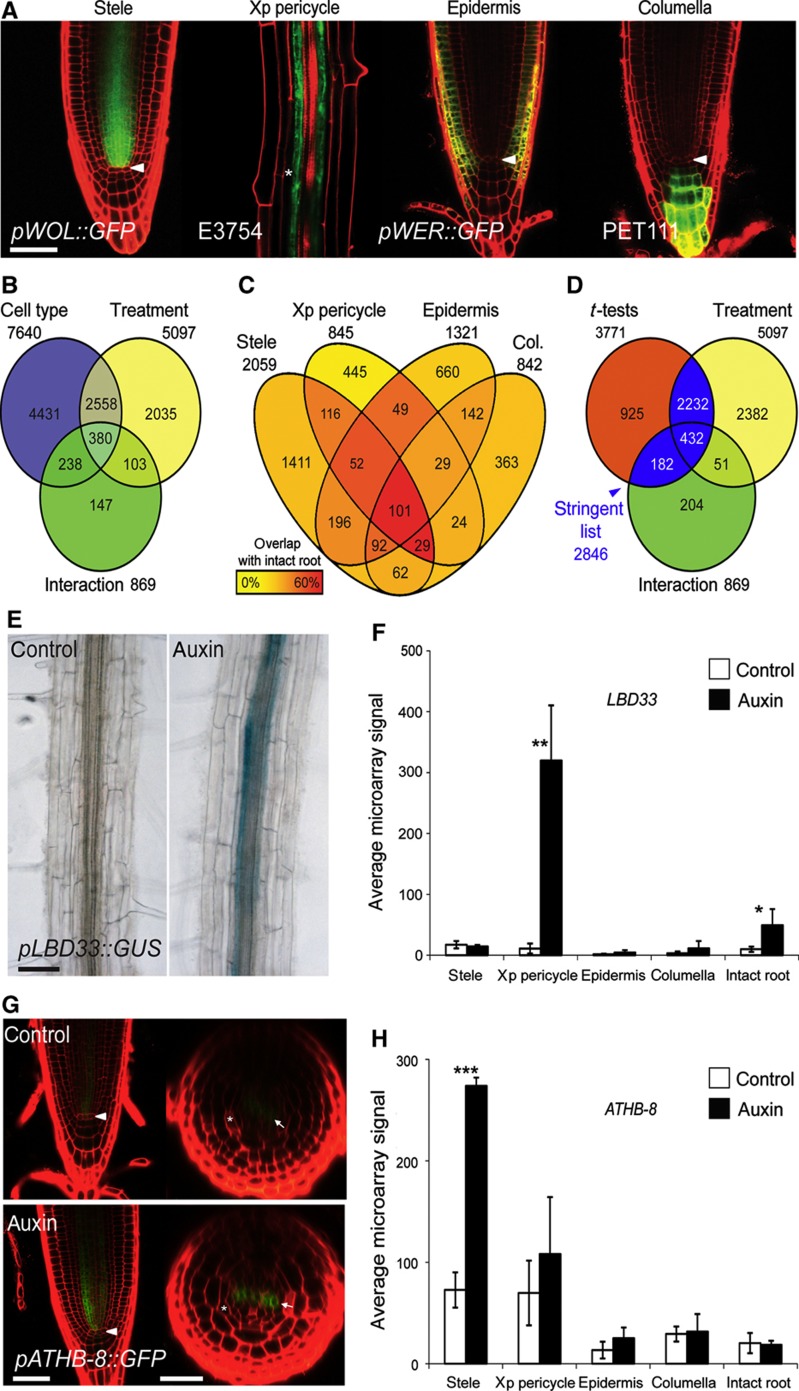Figure 2.
Cell type-specific analysis of auxin responses. (A) Confocal micrographs of 5 dpg seedling roots of the four GFP-marker lines used for the fluorescence activated cell sorting of the stele (pWOL::GFP), xylem-pole pericycle (E3754), epidermis (and parts of the lateral root cap; pWER::GFP) and columella (PET111). Roots were incubated with propidium iodide to highlight cell boundaries (red); arrowheads indicate the QC, asterisk indicates the endodermis, scale bar indicates 50 μm. (B) A Venn diagram of the two-way ANOVA results showing the overlap between groups of genes found to be significant (P<0.01) for the factors cell type, treatment and interaction between cell type and treatment. (C) Venn diagram of the 3771 genes found to be significantly responding to auxin treatment in the four assayed tissues (t-test P<0.01, fold change >1.5). The yellow to red color code indicates percent overlap with auxin-responsive genes found in the analysis of intact roots. (D) Venn diagram of the overlap between lists of genes significantly regulated according to the ANOVA treatment or interaction factors (B) and the 3771 genes that pass any tissue-specific t-test (C). The blue-highlighted regions indicate genes in the ‘stringent’ list of 2846 auxin responders. (E) Micrograph of pLBD33::GUS reporter-gene line treated with auxin (5 μM IAA, 3 h), scale bar indicates 50 μm. (F) Histogram of microarray expression data for LBD33, showing significant induction specifically in the xylem-pole pericycle sample. Data are represented as mean±s.d.; n=3; t-test *P<0.05, **P<0.01. (G) Confocal analysis of pATHB-8::GFP reporter-gene line treated with auxin (1 μM 2,4-D, 16 h). Images were obtained with equal gain settings in the GFP channel. Arrowheads indicate the QC, arrows indicate the xylem pole, asterisks indicate endodermis and scale bars indicate 50 μm in longitudinal section and 25 μm in radial section. (H) Histogram of microarray expression data for ATHB-8, showing significant induction specifically in the stele sample. Data are represented as mean±s.d.; n=3, t-test ***P<0.001.

